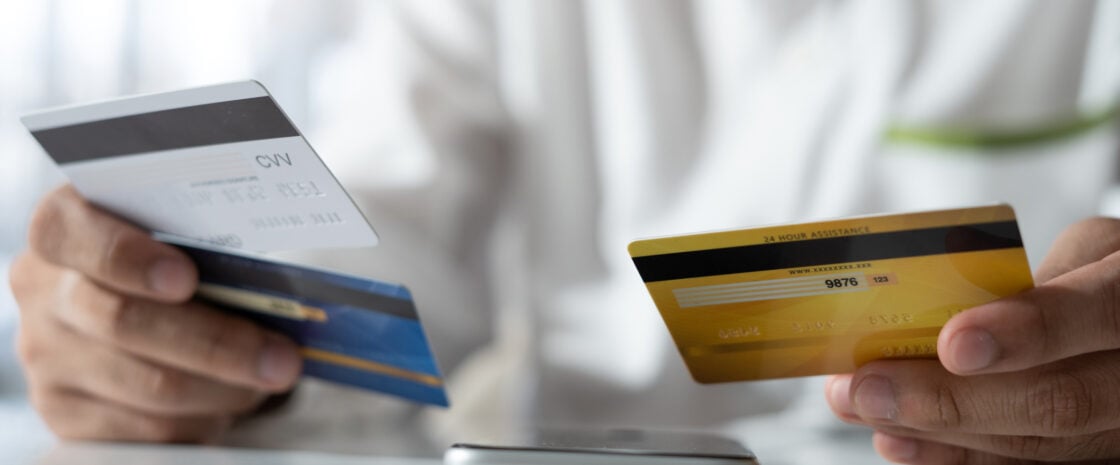When used responsibly, a credit card can be a rewarding addition to your financial tool belt. But sifting through the countless options available on the market can feel overwhelming. The good news is that there are ways to make the process less daunting. Follow these four simple steps to help narrow down your options so you can choose a credit card with confidence.
1. Check your credit report and score
Before you apply for a credit card, it’s a good idea to check your credit score. Being aware of your credit history can give you a better idea of which products you’re more likely to qualify for.
Having a ‘good’ credit score rating or above can help you secure more competitive interest rates and perks. A lower score, on the other hand, may not give you access to premium credit cards, but you could still check out simple cards with minimal frills to get you started.
You are entitled to a free credit report every three months in Australia, and can get your credit score from any of the three credit reporting agencies (Equifax, Experian and illion).
🤓 Nerdy Tip
As you move through the process of choosing a credit card, make sure you check the eligible requirements of each card, such as minimum age, residency status or household income. Knowing if you do or do not qualify for the card before you apply can help you avoid unnecessary application denials. Multiple denied applications can hurt your credit.
2. Identify the right type of card for you
In general, you can expect to find the following types of credit cards on the market:
- Rewards credit cards. These cards typically offer points, miles or cash on eligible purchases.
- Frequent Flyer credit cards are tied to a specific airline’s travel rewards program, such as Qantas Points or Velocity Points.
- Travel credit cards typically offer travel-centric perks, like travel insurance, airport lounge access and no foreign transaction fees.
- Cash back credit cards earn a percentage of cash back on eligible purchases.
- Store credit cards are often tied to a particular brand, and you can earn rewards when you shop at specific retailers.
- Low interest and fee cards. These cards don’t usually offer the same bells and whistles that come with other cards, like reward points or travel perks. Instead, these no-frills options focus on offering low interest rates and limited fees.
- Low and no-fee cards do not charge a high annual fee (or do not charge one at all) can still come with other costs, such as interest rates, balance transfer fees and cash advance rates.
- Low-interest cards offer a lower-than-average interest rate on purchases, such as 8.99%. Due to the low rate, stricter eligibility requirements, like a strong credit history, may apply. For example, you will likely need a clean credit history to qualify.
- Balance transfer cards come with a promotional interest rate on transfers. The initial interest rate on these transfers can be as low as 0%, and last for up to two years, depending on the card. Keep in mind that after the promotional period ends, the standard interest will apply. Plus, there is typically a fee (such as 3% of the balance) charged to each transfer.
- Other options. If you need a more flexible credit limit, or want to avoid credit altogether, these alternatives to the traditional credit cards may be worth a look.
- Charge cards work similarly to standard credit cards, but do not have a preset credit limit. Currently, American Express is the only issuer offering a charge card in Australia.
- Prepaid cards are technically not credit cards, but some prepaid cards offer rewards. So, if you’re after points or miles and don’t want the credit, prepaid cards may be a good option. Australians who need foreign currencies may also benefit from prepaid travel cards.
- Debit cards are also not the same as credit cards. Debit and credit cards differ in many important ways. Still, these bank cards usually come with convenient features, like contactless payments and fraud protections. If you aren’t comfortable taking on credit, consider sticking with your debit card.
Example: Mary often flies to see her family in Brisbane and typically flies with Virgin Australia. She wants a rewards credit card that can help her earn miles for her trips. In this example, she may want to consider a frequent flyer credit card that earns Velocity Points.
3. Prioritise the features you value the most
Depending on your situation, the credit card you choose may need one or more special features, such as:
- rewards program
- rewards earn rate, like how many points you earn per dollar spent, and on what type of purchase
- low interest rate on purchases or cash advances, or zero-interest cards
- low or no annual fees
- no or low balance transfer rates during a promotional period and ongoing
- no foreign transaction fees to purchase made in other currencies and overseas.
Make a list of the features you want or need in a credit card, then rank them from most important to least important.
To do this, think about the reason you’re getting a credit card. Do you want to earn the most rewards possible? Are you looking for just a basic, free card to help build credit? Or are you in the market for a card with high-end perks like airport lounge access? Whatever the answer, they’ll likely be one or two defining features that mean the most to you.
Example: Tom wants to move his current credit card debt to a card with a lower interest rate. He wants to focus on paying down the debt and saving money, so a low annual fee would be nice. In this example, Tom might first look for cards with no or low introductory balance transfer rates, and then see which ones have the lowest revert rate and annual fee.
4. Compare cards
You may find several cards that offer the same features, making it hard to pick just one. This is an opportunity to dive deeper into the details of each card.
Pay close attention to the following factors when comparing cards. If two cards offer your ‘must-haves’, a tertiary feature may help tip the scale.
- interest rates
- annual fee
- other fees and charges
- promotional rates and lengths
- welcome offers
- interest-free days
- rewards
- included insurance
- foreign exchange fees
- perks like rental car discount and airport lounge access
- credit limits (minimums and maximums).
Example: Mary has found several rewards cards that earn Velocity Points — her first priority. Her second priority is to keep the annual fee below $200. This helps narrow the list, but there are still a few to choose from. Reviewing the perks, she can see that one card offers extensive travel insurance, something she’d appreciate having.
Quick tips
There’s no such thing as the best credit card, only the right one for your situation. Here are some quick tips for choosing a credit card in Australia.
- Talk to your bank. If you don’t think you can qualify for a credit card, talk to your bank about the cards they offer. They may be more inclined to approve you for one of their cards as they already have a relationship with you.
- Limit your applications. Don’t apply for multiple credit cards within a short period of time as it can hurt your credit.
- Make sure the benefits of the card outweigh the cost. This will be different for everyone as the value of the card is based on how you use it. For example, if your frequent flyer card costs $150 a year, you’ll ideally want to earn at least that amount in miles to make the card worth it.
DIVE EVEN DEEPER

9 Things To Know Before Getting Your First Credit Card
Understanding the basics can save you time, money and frustration and get you on your way to building good credit.

How To Calculate Credit Card Interest
Knowing how to calculate credit card interest puts you in a better position to take charge of your interest.

How To Use A Credit Card Responsibly
Learn how to use a credit card responsibly and follow best practices to leverage the full range of benefits.

What Is An Instalment Payment On A Credit Card?
It’s like buy now, pay later — but runs through your bank.
